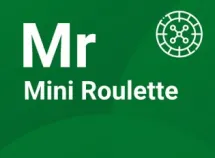
Sweet Bonanza

PlinkoX

Hotline

Aero

TowerX

Mini Roulette

The Dog House - Dog or Alive

Beheaded

Lightning Roulette

XXXtreme Lightning Roulette

Russian Roulette

Ultimate Roulette

Gold Vault Roulette

Mega Roulette

Vegas Roulette

Caribbean Stud Poker
 Table of contents
Table of contents1win online is a website that includes a wide range of games and offers for bettors. It has a modern design and can be accessed from a variety of devices. Players from Pakistan and other countries can record their first winnings by selecting a suitable 1win game. They are presented by proven developers and this is confirmed in the 1win reviews.

On 1win's official website, you can find everything you need for an interesting pastime. The developers have taken care of the quality of the interface and the filling of the platform. If you want to play safe and fair, choose the 1win site. The following describes the basic information about this popular 1win casino.
|
Column |
Description |
|
📅 Year of Establishment |
2016 |
|
💼 Owner |
NextGen Development Labs LTD |
|
🏢 Headquarters |
Willemstad |
|
📜 Licence |
Curacao, № 8048/JAZ 2018-040 |
|
🎁 Key Offerings |
Welcome Bonus, Free Spins, Cashback, etc |
|
📞 Customer Support |
Live chat, email, Telegram |
|
💱 Accepted Currencies |
PKR, UDST, EUR, and more |
|
📱 1win Mobile App |
Available |
|
🛡️ Security |
SSL-encryption, Curacao Licence |
|
💲Payment Options |
Cryptocurrency, JazzCash, Nayapay, etc. |
|
🏏 ⚽ Popular Sports |
Soccer, tennis, basketball, and cybersport |
|
Feature |
Rating |
|
Overall assessment |
4.8/5⭐ |
|
Output speed |
4.7/5⭐ |
|
Bonuses and offers |
4.8/5⭐ |
|
Safety and regulation |
4.7/5⭐ |
|
Software and games |
4.8/5⭐ |
|
Reliability |
4.6/5⭐ |
Registration and login are done via the 1win official website or mobile app. The player has the right to choose the most convenient version and use it. The process is standard, so you only need to fill in a few fields. It is important to familiarize yourself with all the terms and conditions even before creating an account to understand how everything works.
To register 1win, you need to go to the account creation tab. A window will appear in front of you in which you need to fill in the following fields:
Next, confirm your 1win account creation via a code that will come through your contact information.
You can log into your 1win casino account whenever you want. To do this, after registration, follow the steps below:
After logging in, the main casino page will appear in front of you. You can go to your personal cabinet to filter all the parameters.
Among the main advantages of 1win casino is the variety of bonuses. They are awarded both to newcomers and those who have been using the platform for a long time. The specifics of their receipt are different, so you should carefully familiarize yourself with the rules. Take advantage of all the promotions to get more extra rounds or increase your balance.

1win bonus for newbies is given after registration and deposits. Here's some basic information about this offer:
You can only get it once, so be careful not to miss out on this welcome package.
There is a 1win promotion for those who prefer to bet on sports. By making express bets, you can get a percentage. It depends on the number of events in the express. Bonus percentage ranges from 7% to 15%. The minimum number of events in one coupon is 5.
Cashback is automatically credited if you lose funds. You don't need to search for a 1win promo code or take other actions to do this. Just spend time on the 1win site and automatically receive such rewards.
|
1win Cashback |
Amount of bets for 7 days |
Maximum cashback amount |
|
1% |
330,000 |
9,900 |
|
2% |
990,000 |
13,200 |
|
3% |
1,650,000 |
16,500 |
|
4% |
2,640,000 |
26,400 |
|
5% |
3,300,000 |
49,500 |
|
10% |
33,000,000 |
66,000 |
|
20% |
66,000,000 |
99,000 |
|
30% |
165,000,000 |
165,000 |
1win constantly updates its assortment, replenishing it with the best games. This real casino cooperates with major providers. Thanks to this, players can enjoy quality 1win games without glitches. It is up to you to choose the right option to embark on exciting rounds.

1win website includes thousands of slots with different themes. You can choose from the more popular ones as well as games that have been released recently. If you are a beginner, start with varieties with minimal paylines and reels. 1win slots online are simple to start, so it's the perfect option to get started.
You have heard of 1win Aviator or Lucky Jet, which are representatives of the crash genre. The 1win platform also offers fast games of their production. For example, you can test your intuition by selecting Mines. Users need to carefully open the cells and not fall on the bomb. In this 1win crash game, you can adjust the level of risk by pre-selecting the number of bombs.
If you've already played the classic 1win online game, it's time to get to the live casino. Here, participants compete against each other by joining a table in real-time. On the 1win website, such games are available at any time and are offered by different providers.
For those who want to place bets, a "sports" 1win section is offered. It is characterized by the following features:
1win bettors are unlimited in the number of matches they can bet on.

1win sports betting is varied, so it is liked by bettors of different levels. In addition to the more well-known sports, there are rugby, golf, handball, UFC, martial arts, and more to choose from on 1win.
For soccer, there are usually the most tournaments. 1win also offers favorable odds and the ability to follow statistics. If you like the team spirit and dynamics of this sport, choose it for betting and get your winnings with the right predictions.
Basketball is often chosen for 1win bets. Given the constant competition of the teams, bettors can observe high and stable odds. Especially if they choose the NBA.
In tennis, events develop quite quickly. Many believe that it is a sport that is easy to bet on. Basically, they are made by individual players. The 1win website has tennis tournaments available all year round, so keep track of them whenever you want.
Cricket at 1win is being chosen more and more often. Most of the time, bettors choose to win or lose a team with a handicap. It is possible to form your unique strategy, as well as easily track all important parameters for analysis.
For fans of 1win CS:GO, Valorant, Dota 2, and other games, there is good news. They can follow cybersports events and bet on the outcomes. The advantages are its spectacularity and flexibility in betting. Even though the tournaments take place online, watching them, you can get very vivid emotions.
1win offers bets for all tastes. In the table below we will look at the most common ones.
|
Single |
Multiple |
Series |
|
A simple bet that includes one event. |
Includes several events. |
A bet on a sequence of events. |
|
It is easy to understand and calculate, so it is often used by beginners. |
A more complex analysis may be required. |
Suitable for bettors who want to combine bets on multiple tournaments. |
1win casino online offers quite a few payment systems for making transactions. Since everything starts with a deposit, familiarize yourself with the 1win payment systems that offer it.
|
1win Payment Method |
Minimum Deposit (PKR) |
Maximum Deposit (PKR) |
Fees |
|
Cryptocurrency |
Depends on currency |
No limit |
None |
|
Easypaisa |
300 |
PKR 50 000 |
None |
|
Nayapay |
500 |
PKR 50 000 |
None |
|
JazzCash |
300 |
PKR 50 000 |
None |
|
Airtm |
1,494.51 |
PKR 298,901.01 |
None |
In 1win, the first deposits are accompanied by pleasant bonuses. You do not need to fill in a large amount of data to make them. The peculiarity of filling out the form depends on the payment system you choose. Before making a 1win deposit, compare several methods for making transactions.
Not only when depositing there is a 1win minimum deposit. If you want to withdraw your 1win winnings, please read the table below first.
|
Payment method |
1win minimum withdrawal (PKR) |
Maximum withdrawal amount (PKR) |
Fees |
|
Easypaisa |
PKR 1 500 |
PKR 50 000 |
No |
|
JazzCash |
PKR 1 500 |
PKR 50 000 |
No |
|
Bitcoin |
PKR 29,890.1 |
PKR 2,989,010.06 |
No |
|
Ethereum |
PKR 4,483.52 |
PKR 2,989,010.06 |
No |
|
Tron |
PKR 4,483.52 |
PKR 2,989,010.06 |
No |
|
Tether ERC20 |
PKR 4,482.39 |
PKR 2,988,257.09 |
No |
|
Tether TRC20 |
PKR 4,483.67 |
PKR 13,966,971.98 |
No |
|
Tether BEP20 |
PKR 4,483.67 |
PKR 13,966,971.98 |
No |
|
BNB - BEP20 |
PKR 7,472.79 |
PKR 2,989,116.36 |
No |
|
Litecoin |
PKR 4,483.52 |
PKR 2,989,010.06 |
No |
|
Monero |
PKR 8,967.03 |
PKR 2,989,010.06 |
No |
|
Bitcoin Cash |
PKR 4,483.52 |
PKR 2,989,010.06 |
No |
|
Dash |
PKR 4,483.67 |
PKR 2,989,116.36 |
No |
|
Doge |
PKR 4,483.52 |
PKR 2,989,010.06 |
No |
|
Zcash |
PKR 4,483.67 |
PKR 2,989,116.36 |
No |
|
Ripple |
PKR 4,483.67 |
PKR 5,978,232.71 |
No |
|
Stellar |
PKR 4,483.67 |
PKR 2,989,116.36 |
No |
Players can use both the website and the 1win app. Online casino games work great regardless of the version you choose. The difference lies in the speed of page loading and the need to download. The website is available to everyone, and you can download the mobile app if your device meets the system requirements.
1win casino app can only be downloaded from the official website. The full mobile 1win version is available for Android devices. The download is free of charge and does not take up much memory on the device.
To download the 1win app, you need to make sure your device meets the system requirements and start downloading from the 1win website. Then, you have to wait for this process to finish and run the file.
1win play online can be done without obstacles and through the website. It can be accessed through any browser. 1win has taken care of the comfort of users, so they offer them to play both from a phone, and from a computer or tablet.
1win original website solves any user issues through the support team. It employs experienced 1win managers who can competently answer any questions you may have regarding casino or sports betting. To do this, first select the appropriate method of communication.
Each player can email - support@1win.xyz. If you have a question that can wait, this method of communication with 1win managers will suit you. The main thing is to succinctly describe what your concerns are and make sure you send the message to the correct email address.
On the 1win website or app, you can see an icon with live chat. You can write here at any time. The advantage is that the 1win support team responds quite quickly via this chat.
1win customer care number is not available yet. Instead, users can use text-based communication methods. If a hotline is available, 1win players will be notified.
To register, prepare your basic information and fill in all the required details.
Yes, 1win casino and betting is available for all players from Pakistan.
There are a large number of 1win bonuses including welcome packages, cashbacks, free spins, and so on.
You can launch 1win games or place bets and use other features from any device, including mobile phones.
You can deposit after logging in to your account. Select the appropriate payment system, and fill in the required fields.
Players can choose between live casino, table games, slots, and quick games.
If you have enough funds for withdrawal, you can do it after verification in 1win by choosing the right payment system.